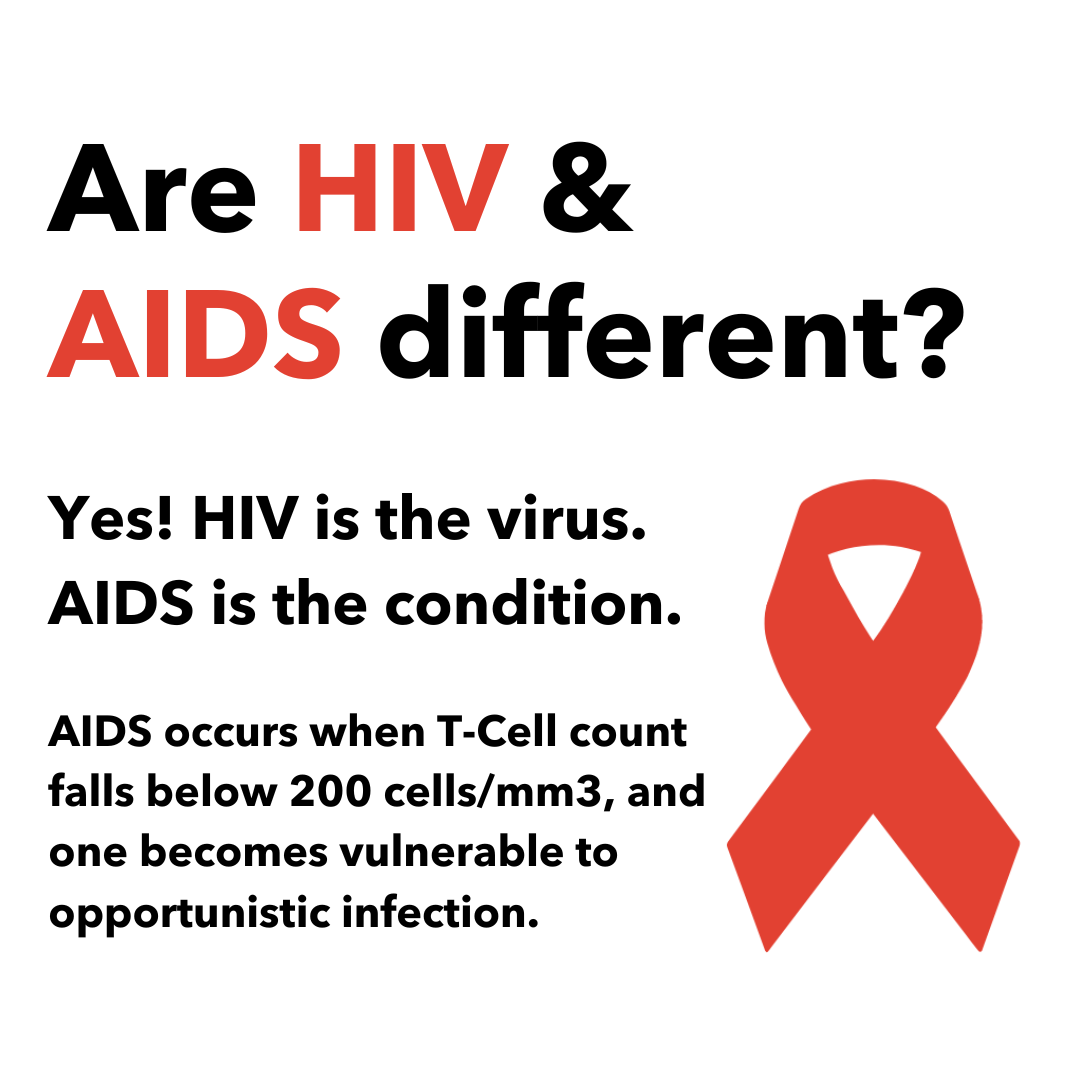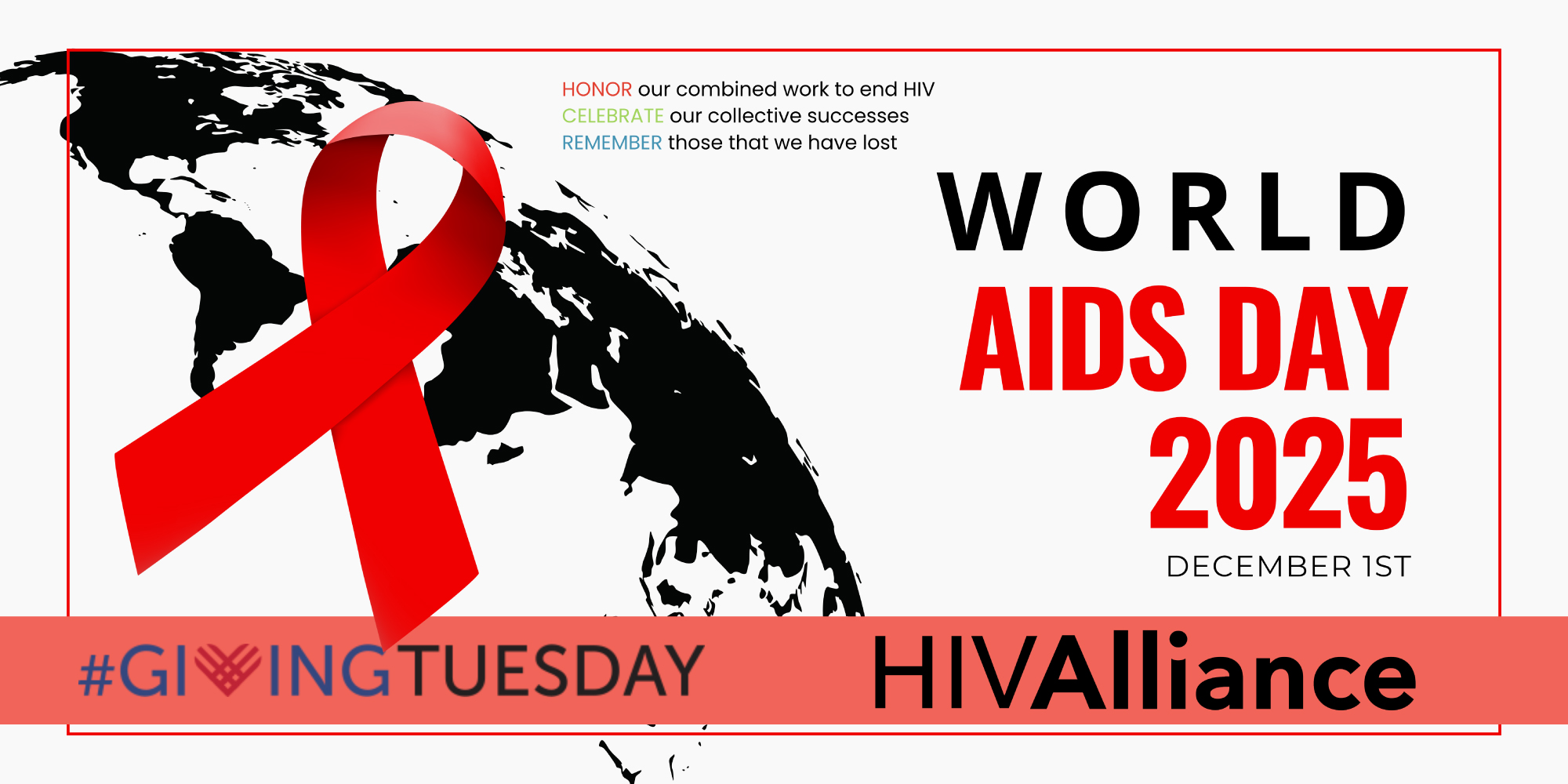
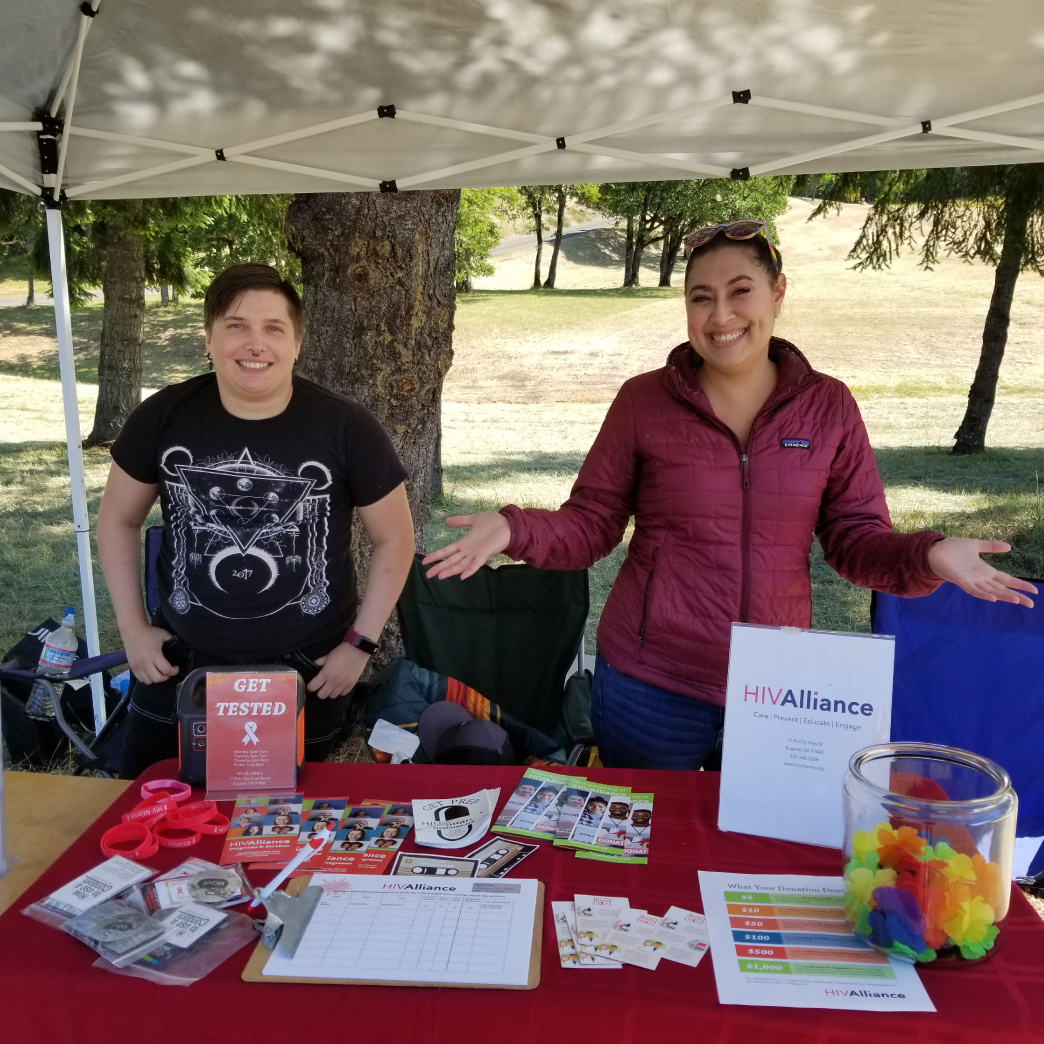
how do people get HIV?
HIV, HCV, & Harm Reduction
HIV, Hepatitis C (HCV), and other sexually transmitted infections (STIs) are serious health conditions that affect individuals worldwide. Understanding how these infections spread and how they can be prevented is crucial to protecting your health and the health of others.
How do people get HIV? HIV is primarily transmitted through specific body fluids such as blood, semen, and vaginal fluids. By learning about HIV, HCV, and STIs, you can make informed decisions to reduce risk and take steps toward a healthier future.
HIV Basics
The Human Immunodeficiency Virus targets and infects the human white blood cell known as the CD4 or Helper T cell. The Helper T cell helps to identify viruses, and if it cannot do this then we are left vulnerable to infections that we cannot fight. HIV can spread and kill off those Helper T cells to extremely low levels. If left untreated HIV can lead to an AIDS diagnosis.
There is still no cure or vaccine for HIV at this time. Once somebody acquires HIV, they will have it for the rest of their life. With medication, HIV can be managed to suppress the virus and allow the immune system (those white blood cells) to thrive and keep us healthy. HIV cannot be spread through casual contact. It is not on the skin, in the air, or in sweat or saliva. HIV does not target any one kind of person; but can affect anyone with blood. The only way to know your own status for HIV is to be tested.
Stage 1: Acute Infection – 2-4 weeks after exposure, can look like the flu. These are the only symptoms.
Stage 2: Clinical Latency – no other symptoms while the CD4 cells are dying and the HIV levels are increasing in the blood stream.
Stage 3: AIDS – having 200 (or less) of those CD4 cells per cubic millimeter AND/OR being more vulnerable to Opportunistic Infections.
6 Infectious Fluids
- Blood
- Semen
- Pre-Ejaculate fluid
- Vaginal Fluid
- Anal Fluid
- Breast Milk
Ports of Entry
- Direct access to blood (sharing needles/razors/tears in skin)
- The anus
- The vagina
- Open cuts or wounds
- Mucous Membrane (eyes, nose, mouth, urethra)
Stigma/Myths
Social stigma is the disapproval, dismissal, or discrimination of someone based on a perceived circumstance. People living with HIV have long been stigmatized and discriminated against due to their HIV status. Many have lost jobs, housing, or been removed from school because of the fear of infection and the stigma surrounding HIV.
Misconceptions about transmission can fuel these harmful beliefs, leading to internal stigma or discriminatory actions. Some individuals may not even realize they hold these biases until their actions reflect them. For many of our clients, stigma has meant being physically separated from family members. The impact of stigma is real, and it harms many people by perpetuating fear and misunderstanding.
We can help to reduce stigma and its negative side effects by acting more mindfully regarding HIV and AIDS. Knowing the facts helps to stop the spread of misinformation as well! Check out this file by the CDC on how to fight stigma!
There are many misunderstandings regarding HIV, these are often led by stigma and fear. Some myths are easier to dispel than others.
- You can get HIV from sharing space with someone who is HIV+. Not true. HIV is only spread through the infectious fluids listed above. It CANNOT be spread through casual contact like: shaking hands, high fives, hugging, kissing, or sports.
- If I have sex with someone who is HIV+ then I will get HIV too. Not true. There are many ways to be physically intimate with a partner that do not require the passing of infectible fluids. Safer sex tools (condoms/barriers and lubricant) can reduce the risk of transmission between partners. Practice makes better!
- HIV is a gay man’s disease. Not true. HIV can infect any person with blood. Unlike us humans, HIV does not discriminate others. This myth is harmful to gay men and others in queer communities. HIV can infect any person living with blood. AIDS was first identified in gay-male populations in the US, thus this misbelief has stuck through time -though it was dispelled early in the 1980s also.
- You can tell if someone has HIV. No you cannot. HIV cannot be seen in somebody else. It is important to ask all romantic and intimate partners of their STI status and testing.
The Possibility of a Cure
There is currently no cure or vaccine for HIV. That being said, in medical history, we have witnessed not only one but TWO cures of HIV. Some call these “accidental cures” or plainly “happy accidents”. These two individuals had both an HIV infection along with a type of cancer called ‘lymphoma’ which affects the immune system white blood cells called ‘lymphocytes’. Both individuals had undergone a serious treatment option: bone marrow transplant. You see, bone marrow is where we humans make new blood cells – red, white, and platelets. These transplants came from individuals that are naturally resistant to the effects of HIV. There is a very small portion of humans who have a mutation on our CCR5 gene – which can allow for a natural HIV resistance, making it so a person with this mutation cannot acquire HIV. A bone marrow transplant is a lengthy, painful, and expensive process; it may not be successful in all people and it may not be practical for most. However, seeing now that two people can be cured of HIV gives hope that a true cure is coming in the near future.
The Berlin Patient (2008) – Timothy Ray Brown
The London Patient (2019) – Adam Castillejo
Protecting Yourself
Practicing sexual abstinence is the only 100% effect way to prevent the spread of Sexually Transmitted Infections, including HIV and unwanted pregnancies. Abstinence is the act of not participating in something (such as sexual interactions). Choosing to be abstinent can be for a short amount of time or a long amount of time; its up to the person who is practicing abstinence. Some cultures believe that one should remain sexually abstinent until they meet their life-long mate; some cultures do not believe this.
If one is practicing sex then they should consider practicing safer sex. The use of Condoms are effective barriers to prevent sexually transmitted infections (like HIV). Using lubrication can help to reduce friction and tearing of the skin during sex. Reducing the number of sexual partners, one has can help to reduce the risk of sexually transmitted infections. In addition, mutually monogamous partnerships along with STI testing is effective to prevent the spread of infection.
Getting Tested
Being tested for Sexually Transmitted Infections is the only way to find out if you have an STI in many cases. Not all infections will show signs or symptoms of infection. Take HIV for example: if the initial stage looks very similar to a seasonal flu, then a person may only think they have the flu for a little while. Once they recover from those flu-like feelings then they won’t know they have HIV until they are tested or until worse complications arise due to complications of an AIDS diagnosis many years later.
We believe that getting routine STI tests and checkups can help maintain overall health. Check out our testing page here. Remember, you don’t know until you know.
Books to Read
- And the Band Played On, Randy Shilts
- How to Survive a Plague, David France
- AIDS and Its Metaphors, Susan Sontag
Movies to Watch
- The Ryan White Story (1989)
- Philadelphia (1993)
- And the Band Played On (1993)
- United in Anger: A History of ACT UP (2012)
- The Normal Heart (2014)
Music Inspired by HIV/AIDS
- “Boy Blue”, Cindy Lauper (1986)
- “In this Life”, Madonna (1992)
- “The Last Song”, Elton John (1992)
- “Streets of Philadelphia”, Bruce Springsteen (1992)
- The musical: “RENT”, Jonathan Larson (1993)
- “Waterfalls”, TLC (1995)
- “Together Again”, Janet Jackson (1997)
Hepatitis C 101
aboutClick here to access our Hepatitis C 101 Online course.
Haga clic aquí para Hepatitis C 101 Online en español.
The Hepatitis C Virus (HCV) infects the human liver cells. The liver has as many as 500 different functions for humans. One of its most important jobs is to filter blood and aid in digestion. Because the liver has no nerve receptors, it cannot feel pain or inflammation itself. This means that someone may have hepatitis C (or another viral hepatitis: A-E) for years without knowing it. Only a few weeks after exposure to hepatitis C, an infected individual may feel “flu-like symptoms” and it can go unseen as hepatitis. When viral hepatitis is allowed to damage the liver without treatment then it can lead to serious liver complications such as liver disease or liver cancer. The liver is an amazing organ, it can regenerate itself too! As humans, we cannot continue to live without a properly functioning liver.
Hepatitis C virus is considered incredibly hearty. Outside of the body, it can survive for as long as three to six weeks on a surface or material. In water, HCV can survive for about three weeks. And within a syringe, where the virus is protected from oxygen, HCV can live for as long as 62 days, more than two months. HCV can be killed outside of the body, but only by cleaners that are defined as Hospital Grade Viricides (bleach, formaldehyde, …). The incubation period (between exposure and when a test can come back reactive) is about 45 days, or 6-7 weeks. Since 2014, Oregon has been known for having the highest rates of HCV related deaths, and continues to be a leading state in number of HCV cases. In this state alone, nearly 500 people die each year from hepatitis C.
Hepatitis C can only be transmitted from the infected blood of someone to the blood-stream of another (uninfected) person. The transmission of this virus has been exploited by the US Opioid Epidemic (declared in 2017); due to the sharing of injection drug equipment that can easily spread blood from one person to another. Any tool can be infected; such as tourniquets, cookers, water, cottons, and even “tooters”. It is possible for infected blood to get onto personal hygiene tools – such as toothbrushes, razors, and nail trimmer – and spread to others if those tools are shared between people. HCV can also be transmitted through sexual contact – where blood is present.
At this time (2020), there is still no vaccine for HCV. However, there is a cure for the disease once somebody becomes infected. Somebody who uses the Oregon Health Plan (through the Affordable Care Act) can find easier access to this treatment through their insurance providers. Somebody can be cured of HCV and then be re-infected, needing treatment again. Treatment could take 12 weeks or longer for a person, depending on the rate and amount of damage that may have already been done to the liver. Some people are able to clear HCV on their own (20%), meaning they don’t need medical treatment. However, most infected people will require medical attention to treat HCV (80%).
For a long time, people born into the Baby Boomer population have been most “at risk” for Hepatitis C. Through medical treatments or blood transfusions, its more possible the virus has been spread to a “Boomer” before Hepatitis C was discovered and known. Researches have noticed a small plateau of younger adults with HCV as well. Other “at risk” groups are:
- Any person who has used illicit drugs
- Recipients of blood clotting factor, blood transfusions, or organ transplants before 1992)
- Any person who has received long term hemodialysis
- Any person experiencing signs of liver disease or with known exposures to HCV
- Any person with HIV
Check out this video that looks at most viral hepatitis infections.
Getting Tested
Again, being tested for STIs and viral infections like Hepatitis are very important for one’s health. Even when signs and symptoms are present, we may not be able to notice them very well. See HIV Alliance’s Testing resource page here.
For any questions or comments about our testing program, please reach out to our prevention staff at prevention@allianceor.org.
Harm Reduction 101
Harm reduction is a philosophy for social justice. It is set in the idea of working to lower (or reduce) the negative impact (or harm) that substance use and abuse might have on a person. What is said about this topic a lot within our agency is that “harm reduction is meeting someone where they are at without leaving them there”. People will be making the choices that they make; and, while we cannot stop them, we can offer a resource that a person can handle on their own.
Some of what our work does is considered Harm Reduction. HIV Alliance is able to provide Syringe Service Programs – drop boxes and needle exchanges throughout the state of Oregon. We are able to remove some of the many used syringes from our areas; this helps to lower the spread of bloodborne pathogens between people. We also offer recover, testing, and safer injection information to clients who may need this.
As we look at opiate drug use and opioid overdose rates increasing in Oregon, a greater need for overdose-reversal medication has come along too. Heroin, vicodin, and fentanyl are among the more widely known opioids in circulation today. HIV Alliance offers trainings and distributions of a drug known as Naloxone. Naloxone is an opiate-inhibitor – when a person is overdosing on an opiate drug, if naloxone is used then the overdose can be reversed for a short time. More information for this is available by our prevention team and Needle Exchange Coordinators.
For some basic information on naloxone, feel free to watch this quick video.
You can also visit our harm reduction page for more information.
If you are interested in a naloxone and opioid overdose training, please reach out to Dane Zahner, Southern Oregon Prevention Manager at prevention@allianceor.org.
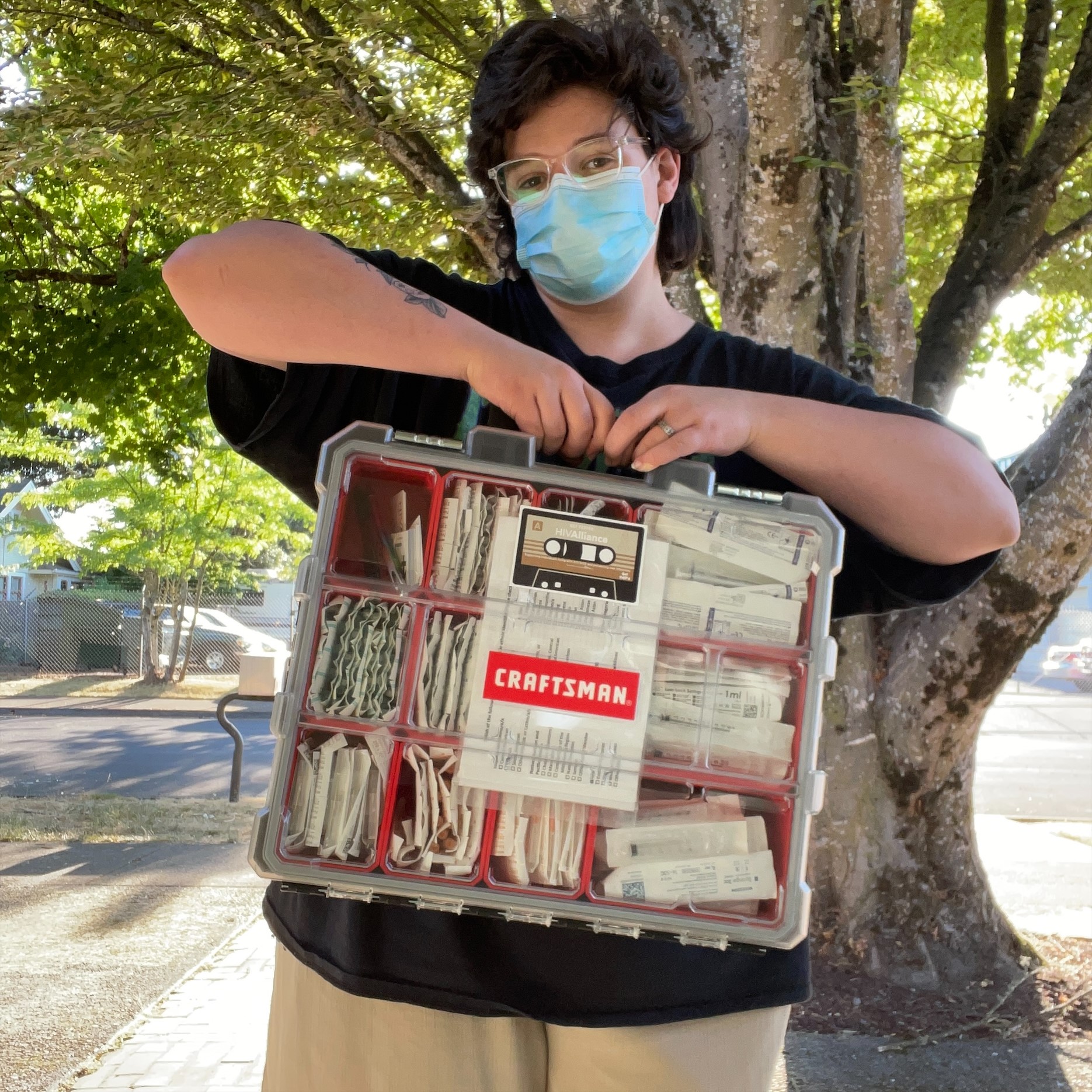
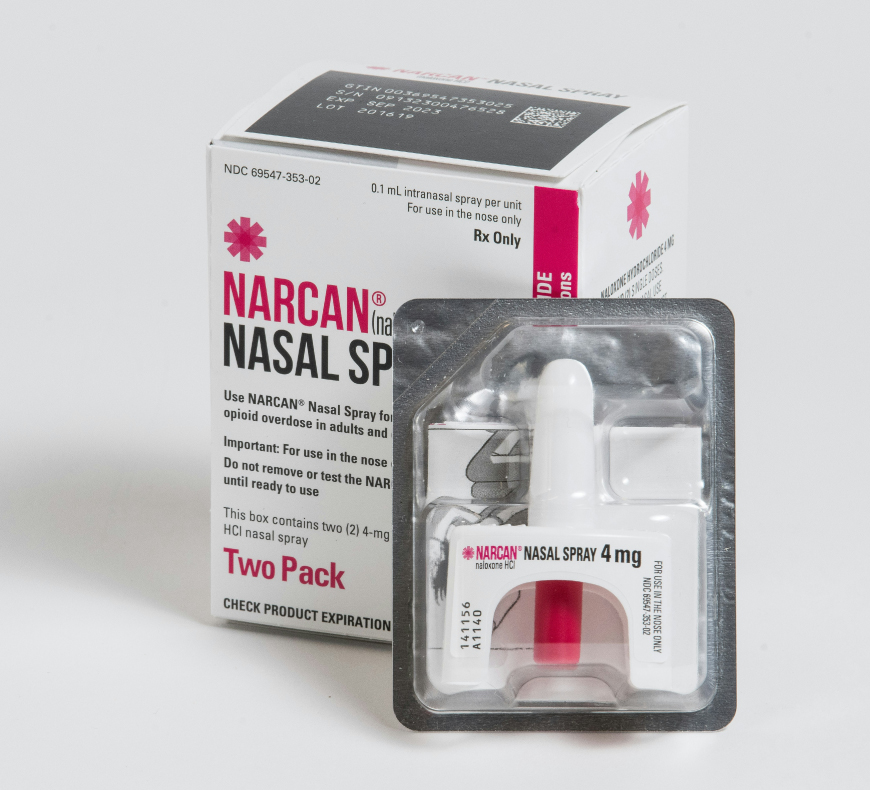
The AIDS Epidemic (1981-1993)
December 1981
HIV Begins to Spread Across Populations
In December 1981, it was clear that the unknown disease affected other population groups, when the first cases of Pneumocystis Carinii Pneumonia (PCP) were reported in injecting drug users, Haitians, hemophiliacs, and others. At the same time the first cases were being documented in the UK.
January 1982
September 1982
CDC Formally Introduces the Term Acquired Immune Deficiency Syndrome
By August “A.I.D.S.” was being used in newspapers and scientific journals. AIDS (Acquired Immune Deficiency Syndrome) was first properly defined by the CDC in September. An anagram of AIDS, SIDA, was created for use in French and Spanish. Doctors thought AIDS was an appropriate name because people acquired the condition rather than inherited it; because it resulted in a deficiency within the immune system; and because it was a syndrome, with a number of manifestations, rather than a single disease.
December 1982
January 1983
AIDS Continues to Spread
In January, reports of AIDS among women with no other risk factors suggested the disease might be passed on through heterosexual sex. At about the same time the CDC convened a meeting to consider how the transmission of AIDS could be prevented, and in particular to consider the newly emerged evidence that AIDS might be spread through blood clotting factor and through blood transfusions. The first AIDS discrimination trial is held in the US.
January 1984
May 1984
San Francisco Closes All Bath Houses
The City of San Francisco closes all gay bath houses. Many Gay men regard this as discrimination. US Secretary of Health and Human Services states that a vaccine against AIDS will be ready for testing in two years. Early blood tests for AIDS are being developed.
January 1985
March 1985
Needle Exchange Begins
In 1984, a small scale needle exchange program begins in Amsterdam. By 1985 needle exchange programs begin in the US, mostly in secret. Some local governments in the US begin to openly support needle exchange. National poll shows that 72% of Americans favor mandatory testing of everyone; 51% favor quarantine of all people with AIDS, and 15% favor tattooing for those infected with AIDS.
April 1985
July 1985
Rock Hudson
Rock Hudson discloses that he had AIDS. This causes huge numbers of people to acknowledge that they too have AIDS. Programs and services supporting people with AIDS around the world receive large influx of new clients. Rock Hudson dies in October of 1985.
September 1, 1985
March 1986
Discrimination Grows Around the Nation
Right wing editor William F Buckley Jr. calls in the New York Times for people with AIDS (PWAs) to be tattooed on the forearm and buttocks. The US Justice Department rules that people who have or are perceived to have HIV may be legally fired. This decision is condemned by the American Medical Association and numerous public health organizations.
May 1986
Widespread Panic
In the face of AIDS-hysteria-based school boycotts, the Reagan administration officials urge the public not to panic since the disease remains confined to gay men and IV drug users. The US military institutes mandatory HIV testing for all troops. Bills are introduced in 20 states to institute PWA quarantine, a ban on PWAs from food-handling and educational jobs, and many states make it a crime to transmit HIV. Arrested prostitutes are forcibly tested in many states.
October 1986
December 1986
A Second Virus Discovered
In West Africa, a second type of HIV, HIV-2, is discovered in commercial sex workers. To date 42,255 AIDS cases are diagnosed in the US; 24,699 have died.
January 1987
ACT-UP
The AIDS Coalition to Unleash Power (ACT UP) is founded in New York City to end the AIDS crisis through direct, confrontational political action. Similar groups emerge in most major US cities.
March 1987
Demonstration
Many demonstrations to end discrimination against people with AIDS and to increase funding for research and treatment begin all over the country. During a demonstration at the White House, DC Police wear yellow rubber gloves, drawing much attention to issues related to HIV/AIDS.
June 4, 1987
US its Shuts Doors!
US Public Health Services adds HIV to the list of “communicable diseases of public health significance”, effectively shutting its doors to HIV infected immigrants and travelers. Doctors around the country are refusing to treat people with HIV/AIDS, so the American Medical Association rules that doctors are obligated to provide treatment for people with AIDS.
August 1987
Study Shows HIV is Not Transmitted by Casual Contact
A University of Miami study of 45 families in which one member has AIDS demonstrates that HIV is not transmitted by casual contact.
December 1987
AIDS Demographic is Changing
In New York City, new AIDS cases from shared needles exceed the number of sexually transmitted new cases. Also in New York, the majority of new AIDS cases are among African Americans. People of color now account for more than two-thirds of total new cases.
February 1988
July 1988
The AMA and FDA Change Their Rules
The American Medical Association begins to urge doctors to break confidentiality and warn sexual partners of people being treated for AIDS. Also at this time in response to the widespread illegal importation of underground drugs approved in other countries, the FDA announces a new policy allowing importation of unapproved drugs for personal use by those with life-threatening illness.
August 1988
1st World AIDS Day
The World Health Organization designates December 1 as World AIDS Day.
April 1989
5th International Conference on AIDS
During the opening ceremony 300 activists from Canada seize the stage, calling for greater AIDS community participation. Two people with AIDS, one from Canada and one from the US officially open the conference on behalf of people living with AIDS in Canada and around the world. This is the first time people with AIDS have a key role in the annual conference. A number of AIDS organizations announce an intended boycott of the 1990 International Conference on AIDS in San Francisco to protest US immigration policies which prohibit people with AIDS from entering the country.
September 1989
AIDS Memorial Quilt
The entire quilt is displayed in Washington DC. The President ignores requests to attend. In the same month, the directors of dozens of AIDS organizations create civil disobedience at the White House to protest the Helms Amendment, which bars anyone with HIV from entering the country. Dozens are arrested.
January 1990
6th International Conference on AIDS
Held in San Francisco, the conference was protested against by activists on a daily basis bringing attention to issues, such as immigration restrictions, access to clean needles, lack of treatment. Federal officials finally meet with women’s treatment activists, who demand a national conference on women and AIDS.
July 1990
A Difficult Year
President and Mrs. Bush participate in the International Candlelight and Memorial Mobilization. Ronald Reagan apologizes for his neglect of the epidemic while he was president. Ryan White dies of AIDS. To date nearly twice as many Americans have died of AIDS as died in the Vietnam War. 198,466 reported cases of AIDS, and 121,255 have died.
January 1991
An End to the Travel and Immigration Ban?
US Secretary of Health, Louis Sullivan recommends an end to the travel and immigration ban on people with HIV. The Bush administration overrules proposed revision; People with HIV are still denied entry into the US.
June 1991
Mandatory Testing of Healthcare Workers Defeated
Based on allegedly being infected with HIV by her dentist, Kimberly Bergalis urges Congress to require mandatory testing of healthcare workers. Under great protest from AIDS and health organizations, the bill is defeated.
November 1991
International Olympic Committee
The International Olympic Committee rules that athletes with HIV are eligible to compete.
May 1992
Another Antiretroviral Drug Emerges
FDA approves Zalcitabine for use in combination with AZT.
July 1992
President Clinton Speaks Out
President-elect Clinton promises full funding of the Ryan White CARE Act, targeted and honest prevention, an increase in research, and end to discrimination against HIV positive immigrants, and an appointment of a national AIDS “czar”.
December 13, 1992
AIDS Becomes the Number One Cause of Death for US Men Ages 25-44
335,211 AIDS cases are diagnosed in the US and 198,322 have died.
February 1993
Lesbian Attention
Responding to protests by ACT UP’s Lesbian Caucus and others, HHS Secretary Shalala forms a Lesbian AIDS task force. In subsequent months, the CDC funds lesbian-specific prevention programs and the NIH’s women’s Natural History Study includes lesbians.
May 1993
NIH Revitalization Act
The U.S. Congress enacts the NIH (National Institutes of Health) Revitalization Act, giving the Office of AIDS Research primary oversight of all NIH AIDS research. The Act requires NIH and other research agencies to expand involvement of women and minorities in all research. The same act codifies the US HIV immigration exclusion policy into law. President Clinton doesn’t mount any opposition, breaking a campaign promise, and signs the act into law.
June 10, 1993
Further Developments on Women and HIV
Sexual transmission surpasses injection drug use as the cause of infection among women.
September 1993
Needle Exchange
A federal government study concludes that giving clean needles to addicts helps prevent the spread of AIDS.
November 1993
"Philadelphia"
The Hollywood movie, “Philadelphia” raises more awareness. Tom Hanks’s performance as a lawyer with AIDS wins an Oscar.
December 18, 1993
"Angels in America"
Angels in America, Tony Kushner’s play about AIDS, wins the Tony Award for Best Play and the 1993 Pulitzer Prize for Drama.
December 31, 1993

